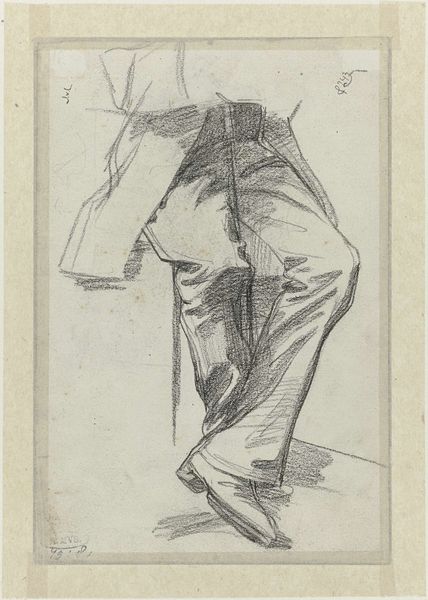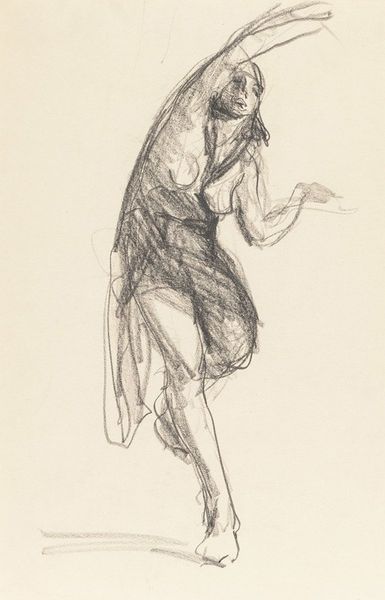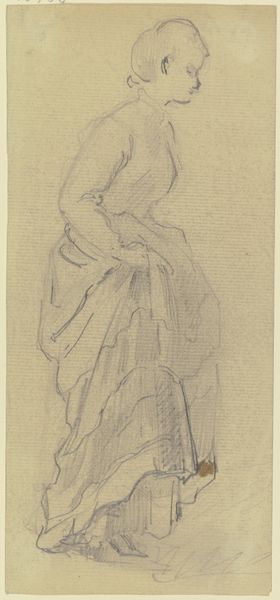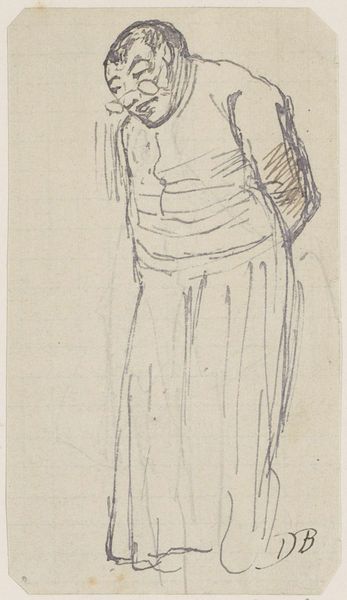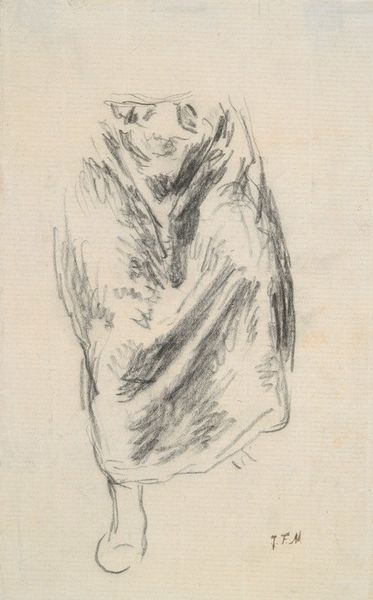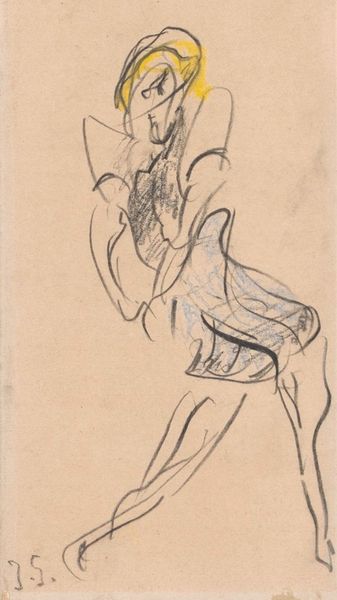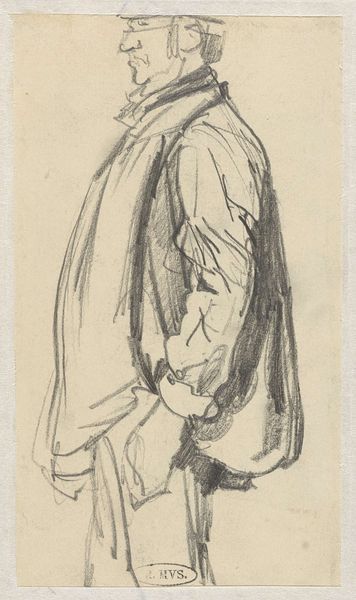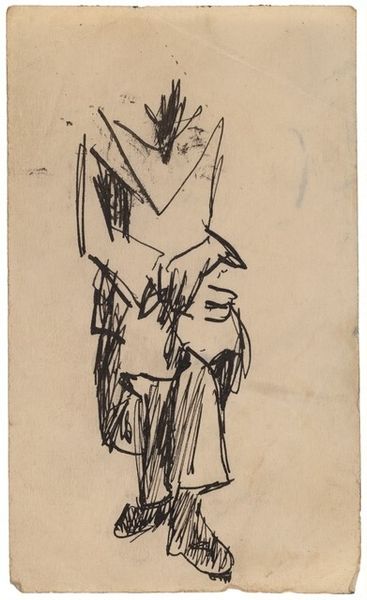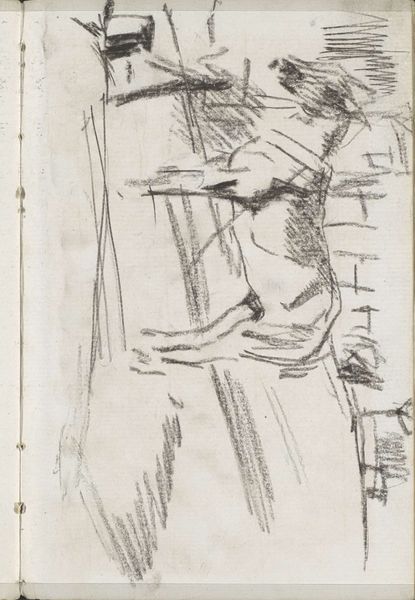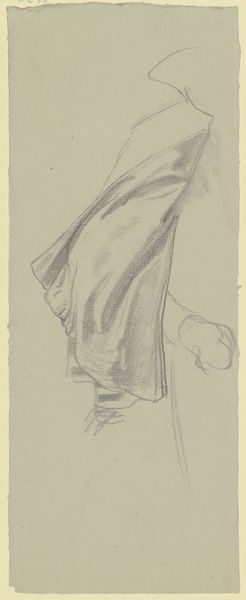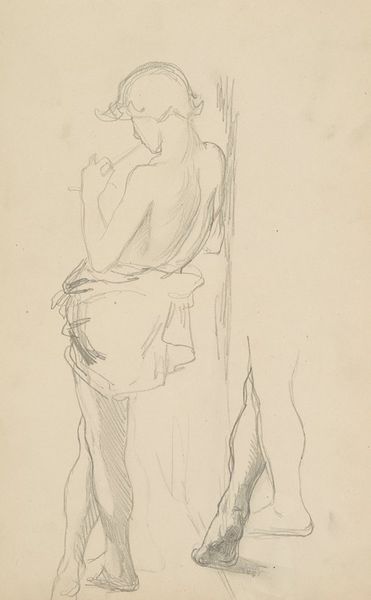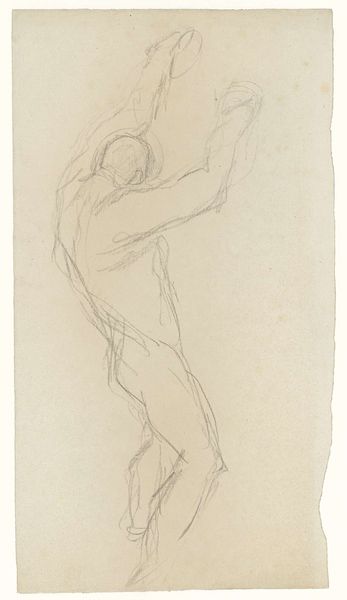
drawing, pencil
#
portrait
#
drawing
#
figuration
#
pencil
#
academic-art
Copyright: Public Domain: Artvee
Curator: Well, here we have a work attributed to John Singer Sargent titled, *Rear View of a Draped Figure.* It's a pencil drawing, seemingly a study of form and light. Editor: My first thought? Poignant loneliness. She could be anyone, anywhere, but there’s this feeling she’s just... left. Disappeared from a moment, caught fleeing a scene, a world perhaps, one never to be described in the foreground, as there isn’t one. Just the person's silhouette. I feel such… distance. Curator: Indeed. Sargent often captured fleeting moments with such remarkable immediacy. This piece feels less like a formal portrait and more like an exercise, exploring the fall of fabric, the curve of the human back. These sketches helped artists develop the skill to convincingly show the world. The artist makes the real seem real on canvas, for the viewer's sake. The pose is reminiscent of classical sculpture. Editor: The drapery, especially, does feel sculptural. There's movement implied, the cloth seems almost windswept, as if she’s in mid-stride. It almost masks any personal identifier on the figure in the sketch. But for whom or from whom is this flight? Maybe the figure has become lost in time in its simple execution as an image, thus it embodies loneliness, for nothing escapes temporality. That head almost dissolving… What do you make of the absence of defining facial features? Curator: I think Sargent, in his practice pieces, favored form over specific identity here, the face is implied with the quick movement of the pencil. Focusing on the universality of the human form under the folds of fabric is typical for this genre of work. But your idea about a sense of disappearance and escape does resonate too. There's definitely an ambiguity that leaves the work feeling strangely modern, for having the classical overtones it does. And how society, and therefore galleries, might prefer beauty and recognizability in a world. Editor: Right, exactly, I wouldn't argue Sargent's choice for no facial details makes a social or political point as such. Yet, thinking sociologically, It could say more about art, the social expectations placed on artistic renderings by art spaces, and how to move within it. Like, this might actually be saying more than some commissioned portraits. Curator: Agreed. It provides space for individual projections. An exercise opens as much as any final declaration might. Editor: And that's the real beauty here, I think. Curator: Precisely, it’s beauty in the in-between, or what we bring to it that elevates the artist in turn.
Comments
No comments
Be the first to comment and join the conversation on the ultimate creative platform.
